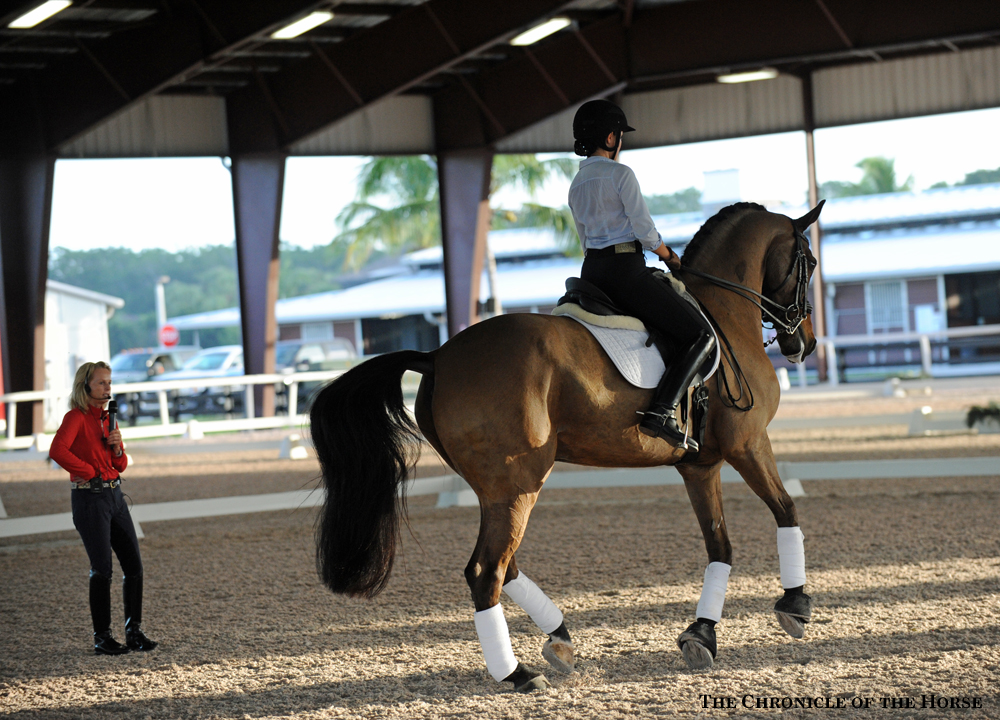Wellington, Fla.—Jan. 5
As a rider, you want to help your horse. But part of helping your horse when it comes to upper-level dressage movements involves helping him help himself—helping him learn to carry himself in better self-carriage and balance without stress—and that’s what both instructors for today’s riding sessions at the Robert Dover Horsemastership Week emphasized.
USEF Developing Coach Debbie McDonald saw a full day of young riders, beginning at 7 a.m., and though they were at different levels, she continually made sure the riders weren’t doing all the work for their horses. If the horses needed a correction, she made sure it was there, but then they were rewarded with a release and a chance to maintain.
“You won’t know how much you can trust him unless you try,” she told Ayden Uhlir as the rider worked through a pirouette canter with her FEI Young Rider mount Sjapoer. “What’s the worst that can happen in this super collected canter? He’ll break. That’s it. The judges will believe this is so much more effortless if it doesn’t look like you’re holding him up.”
In her lessons, 2014 Alltech FEI World Equestrian Games rider Adrienne Lyle, who’s trained as McDonald’s assistant for years, followed a similar system. She repeatedly reminded her riders that their horses must stay forward-thinking on their own. If the rider’s constantly kicking and nagging, the necessary quick reaction to the aids won’t be there for more advanced movements. The same goes for the opposite problem; if the horse gets too strong and pulls or runs, there’s no real possibility for true collection or even honest forward riding.
“The hotter she gets, the more you feel you need to take [of her mouth],” Lyle told Hannah McCabe, who was riding a borrowed horse, Cheryl Holekamp’s Schwalbe NSF. “Take a feel and wait until she answers. If she answers too much, just back it up with some leg.”
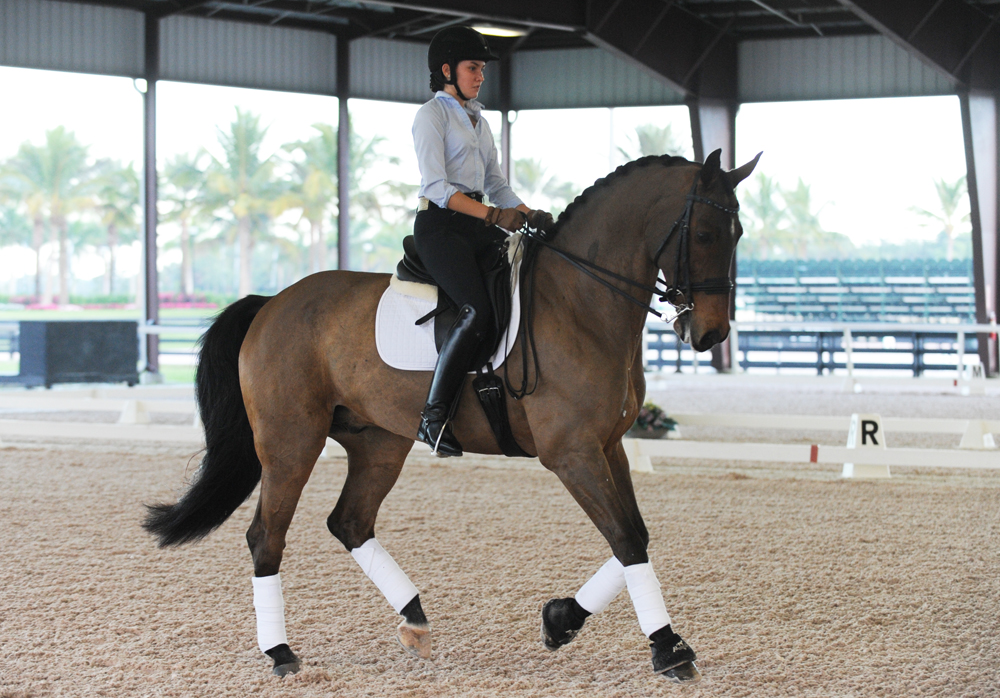
McDonald spent plenty of time making sure Uhlir was sitting straight and riding her horse straight. The trainer wanted Uhlir allowing her mount to carry himself, and testing that self-carriage by giving the inside hand in a pat and release.
“Don’t hold him up,” said McDonald. “He has lovely pirouettes, and you just have to get to that place where you can do a lot less and rely on your leg more when you do that.”
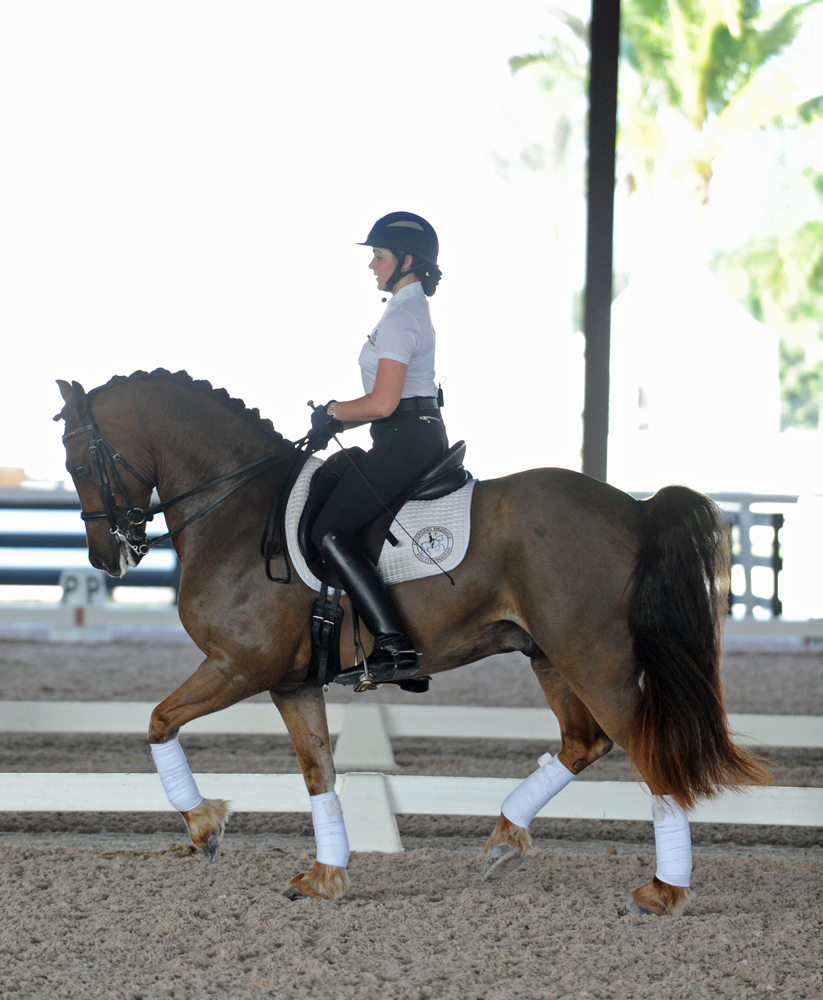
ADVERTISEMENT
In her lesson with McDonald, Allie Cyprus and her Welsh Cob Madoc Gareth schooled some passage. McDonald instructed her to do the work with the passage and then some half-steps on a circle, pushing the horse out sideways the whole time in order to make his hooves move quicker. Again, the idea that the horse maintain his engine behind was stressed.
“You have to have enough horse that you can pull a little bit,” said McDonald. “It’s about making playful little half-halts. When you pull right now, he loses his trot a little bit. You can’t throw away the contact and expect him to stay there. It’s just a matter of him understanding what you want.”
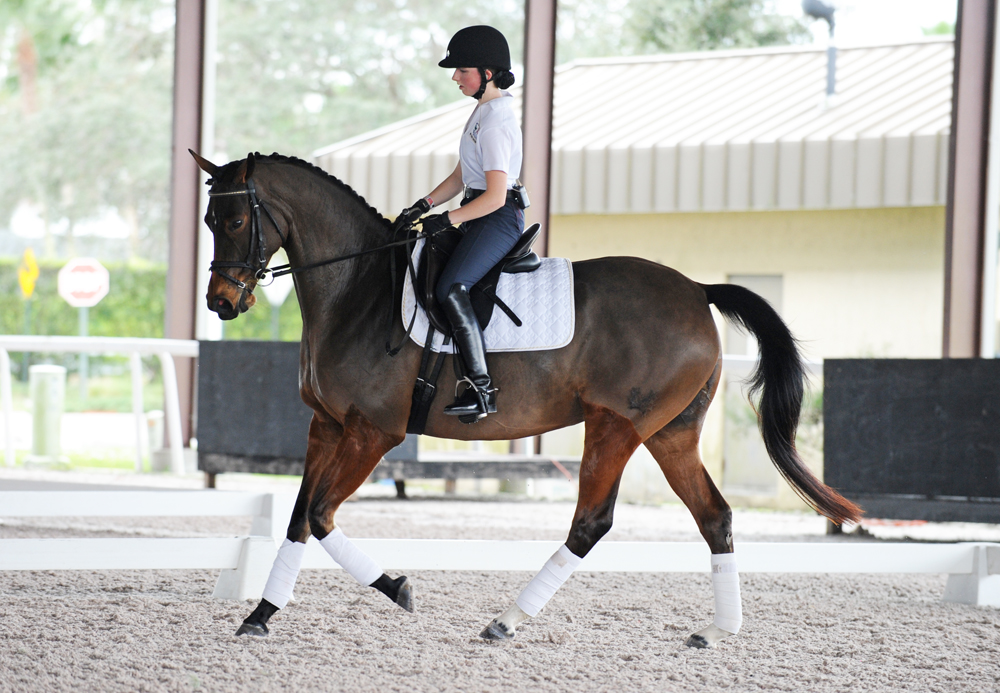
With her borrowed mount, who could get a little hot, McCabe focused on steadying the contact. Lyle had McCabe put the mare to work more in the trot, by sending her into a bit of shoulder-in, renvers and haunches-in, to calm the horse’s brain and contact. It also helped McCabe remember to apply her leg.
“The hard thing with hot horses is that they make us not want to put the leg on, but if the leg is there, then they know that you’re there,” said Lyle. “When she gets unsteady [in the bridle] just give her the lightest nudge with your leg; it’s almost like a little hug.”
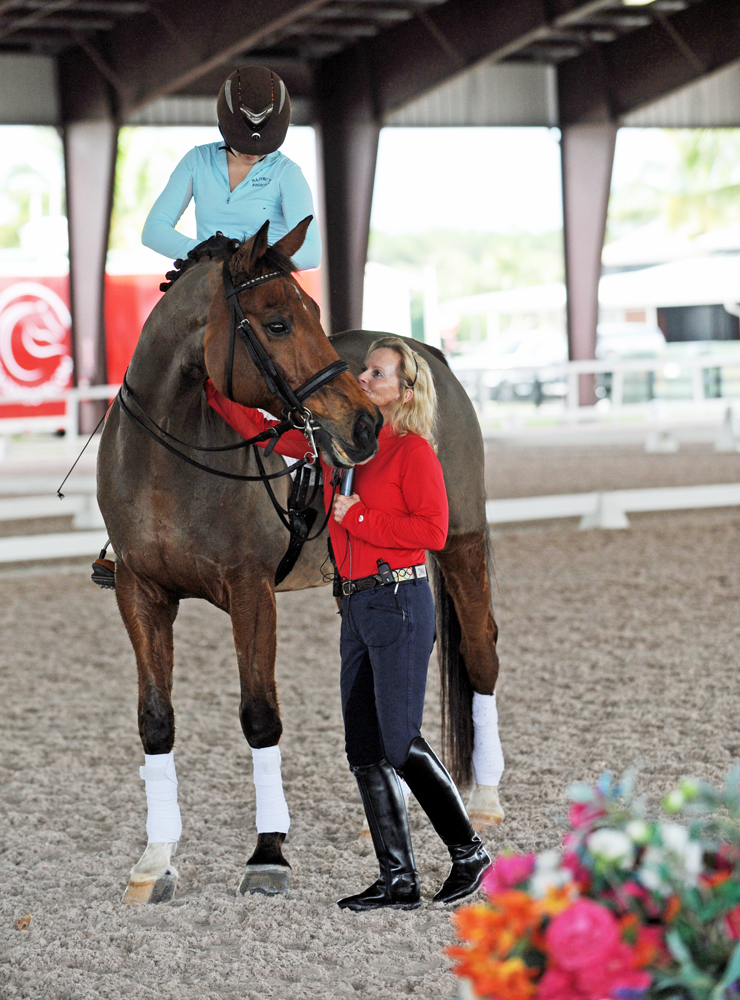
McDonald wanted Mallory Kent sending her Young Rider Grand Prix mount Okidokie sideways during her warm-up, to test his reaction to her leg.
“If he’s delayed, that’ll be in every movement,” she said. “I don’t care how far sideways you go; it’s more about the reaction. Get that reaction, and then go forward. Once he gets sharper, you can just think it and get the reaction—he’ll go forward.”
When the gelding started getting strong, McDonald again had Kent ride him into a sideways movement.
ADVERTISEMENT
“He can’t pull if he’s not running straight ahead,” she said. “When you feel him get strong, you need to let go and ride bigger. I want you to feel like you can give those hands to him. When they get strong, you don’t think, ‘I’m going to take away from this.’ You add.”
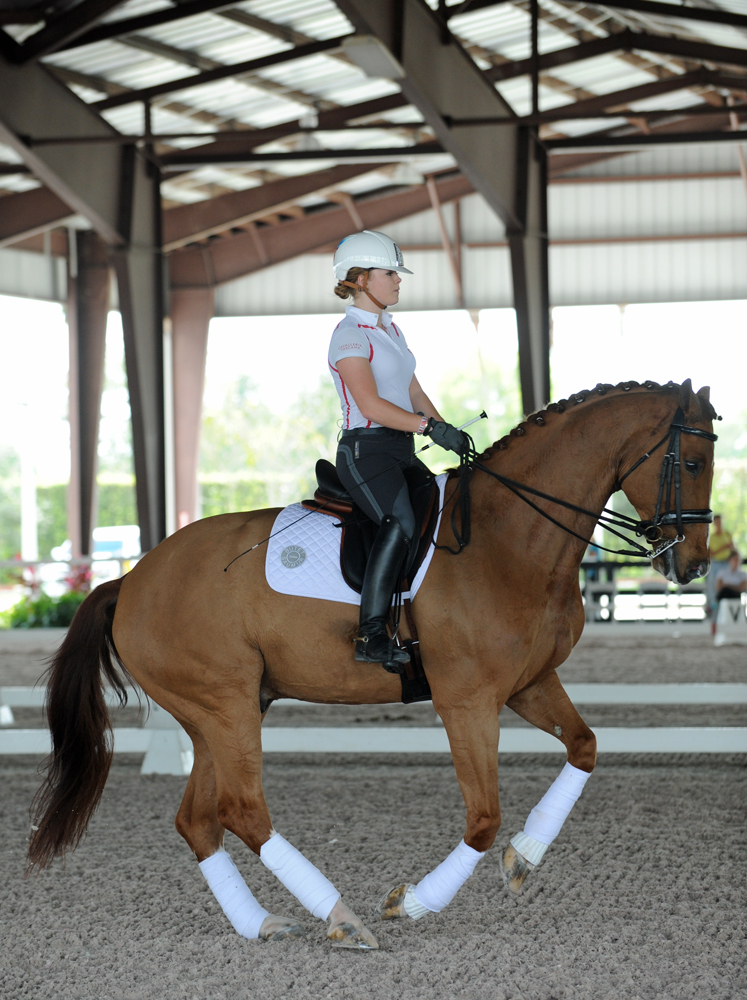
Bebe Davis and her Fievel Mousekewitz put self-carriage to the test with their pirouette canter work. But again, the rider had to set up her horse for success by reminding of him where he should be—and then letting go.
“The second he starts to hang on you or get lower, you have to rock him back,” said Lyle. “Then you can work on getting off the brake. Once you do bring him back, you can be soft in the hand and go forward.”
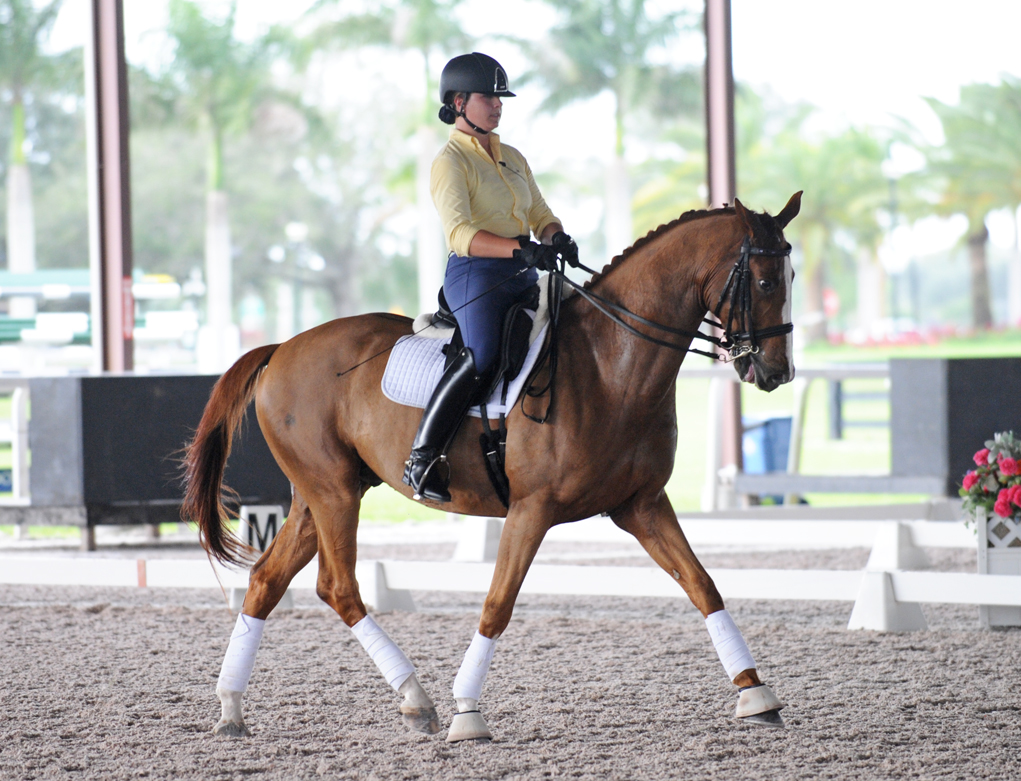
When Cassie Schmidt’s mount was behind the leg at times, McDonald had the rider correct him sharply. But once she did that several times, then the horse was more happily and consistently forward without needed corrections.
“It’s not about movements right now; it’s about reactions,” she said. “You have no prayer of making the front end better if you don’t make the hind end better first. You have to make him accountable for his own balance. He doesn’t have to run all the time, but you just have to make sure it’s there.”
Did you miss Day 1 coverage of the Robert Dover Horsemastership Week? Check it out now.

